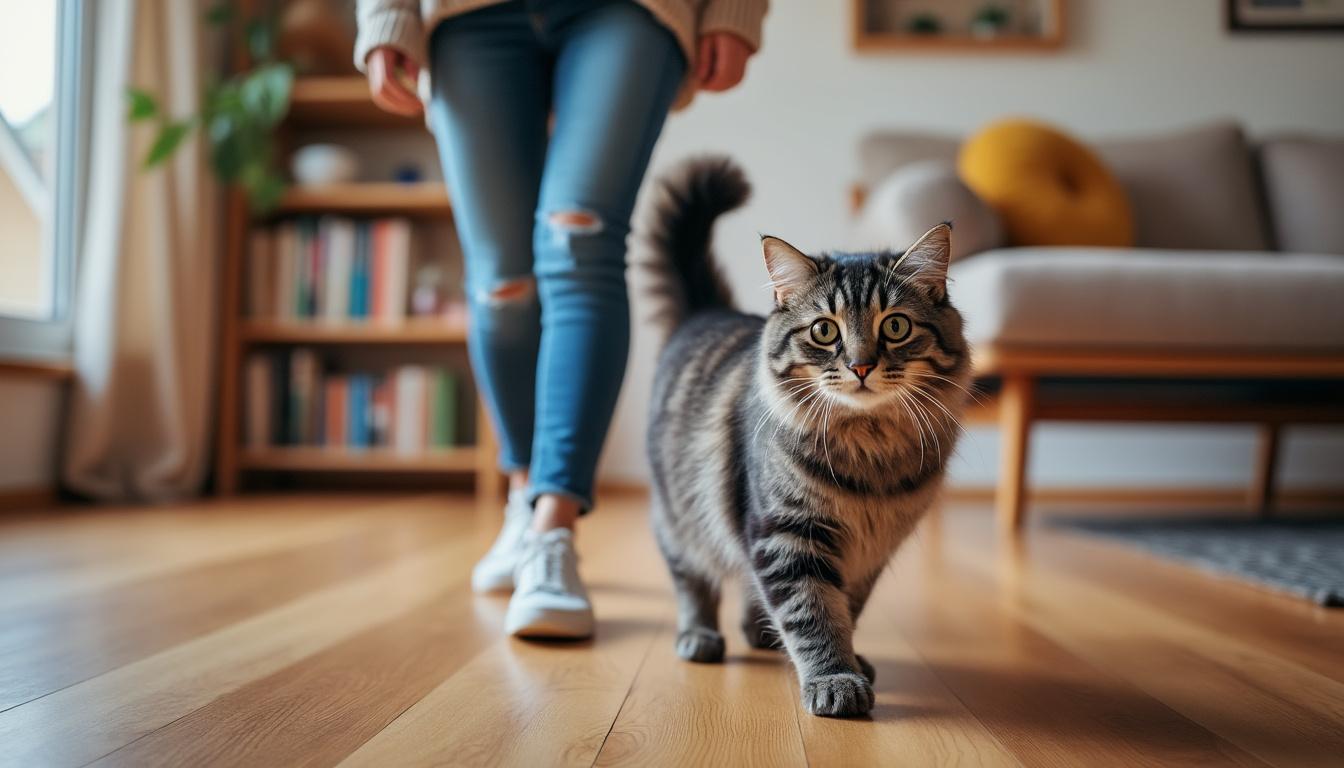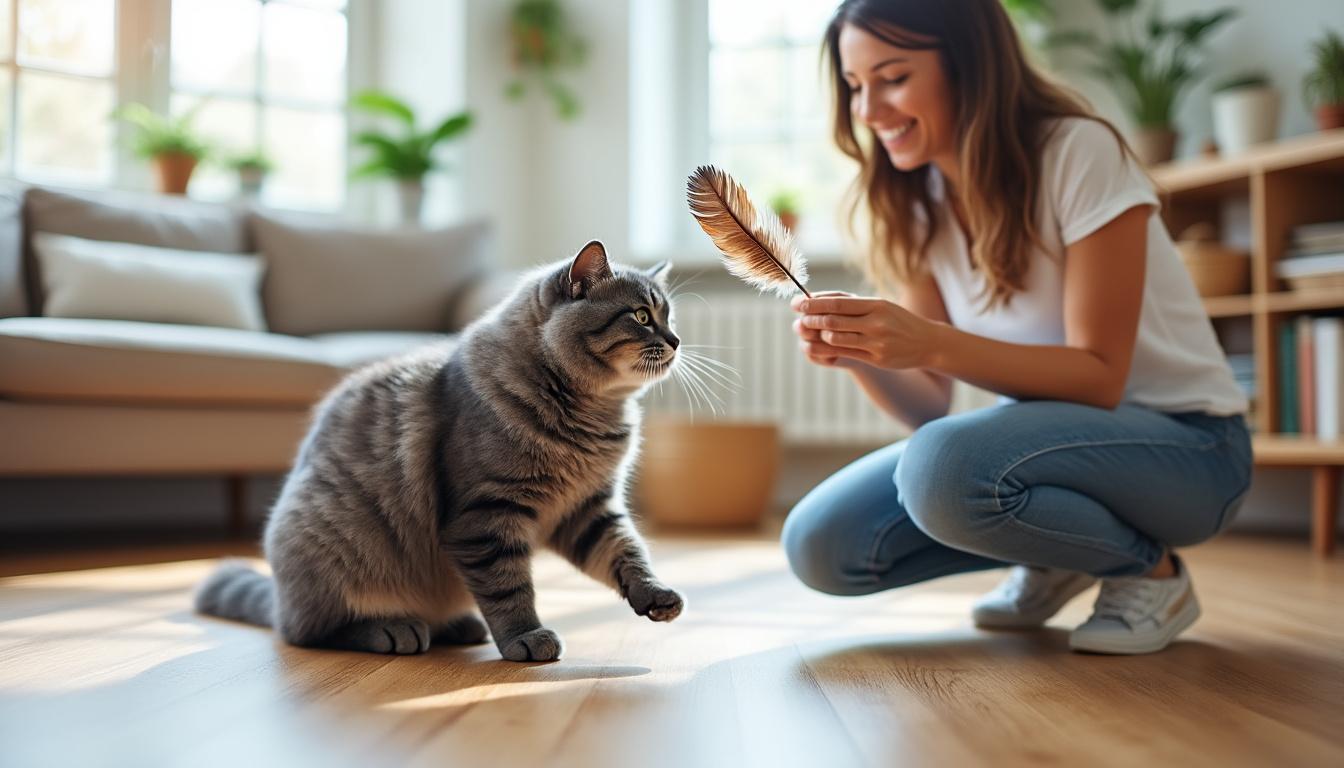Have you ever found yourself puzzling over your cat’s incessant need to shadow you around the house? From the kitchen to the bathroom, and even into bed, your feline companion seems glued to your side. While this behavior may come off as endearing, it opens a can of worms regarding the comfort, attachment, and instincts that define the bond between cats and their humans. Understanding the reasons behind this clinginess can deepen your appreciation for their unique personalities and help you provide the best care possible. Cats may be known for their independence, but there’s a lot more going on beneath the surface when they decide to become your loyal sidekick. So, let’s delve into the intricacies of this delightful yet puzzling behavior.
Brief
- 😻 Cats often follow their owners to express affection and trust.
- 🐾 This behavior may stem from natural instincts or social needs.
- 😸 A cat’s desire to stay close can indicate anxiety or health issues.
- 🛋️ Providing mental stimulation and cozy spaces can encourage independence.
- 🩺 Always consult a vet if your cat’s clinginess seems excessive or unusual.

What Does It Mean When Your Cat Follows You Everywhere?
When your feline friend insists on tailing you all day long, it usually signals a deeper connection than one might initially assume. For cats, following their humans around is not just an idle pastime; it carries layers of meaning that revolve around comfort, curiosity, and social bonding. Let’s break down some key reasons why your cat might be glued to your side.
- 🙈 Feeling Safe: Cats, like any creatures, want to feel secure within their environments. When they follow you around, it often means they perceive you as their protector, enhancing their comfort levels.
- 👐 Seeking Interaction: If your cat follows you, it’s likely looking for a little engagement or playtime. Maybe your presence indicates potential fun, whether through petting or play.
- 🤔 Natural Curiosity: Cats are inherently inquisitive. By trailing you, they get a front-row seat to the daily activities that pique their interest.
- 🍽️ Association with Food: If you’re often the one serving meals or treats, your cat may have learned to associate your movements with food, prompting their insistence on following you.
- 💖 Expressing Affection: Just like any affectionate pet behavior, this clinginess is often a demonstration of love. Cats thrive on emotional connections, and your presence makes them feel cherished.
The interplay among these behaviors can truly enrich the relationship you share with your cat, but understanding their motivations helps you meet their needs more effectively. This bond reflects how intertwined their world is with yours, and it’s something to cherish.
| Reason | Description |
|---|---|
| Feeling Safe | Your cat views you as a source of security. |
| Seeking Interaction | Wants attention or playtime from you. |
| Natural Curiosity | Wants to know what you’re up to. |
| Association with Food | Links you with meal times or treats. |
| Expressing Affection | Shows love and a desire for companionship. |
Bonding and Social Behavior in Cats
Despite the common belief that cats are solitary creatures, their social instincts often mirror those of dogs, showing they thrive in companionship—with humans or fellow felines. In fact, when your cat follows you around, it often mimics the social behaviors they would display in a cat colony, where interaction is vital.
Cats form attachments that can resemble those of human infants. They display behaviors similar to those of toddlers, seeking the presence of their caregiver as a source of comfort. Researchers have noted that in more than 60% of cases, cats form a secure attachment style similar to dogs, meaning they feel safe and relaxed in your presence.
In particular, your cat’s need for constant companionship indicates that they hold a special regard for you. The way they rub against your legs, purr, or sit close can signify a strong bond and a desire for intimacy, reinforcing their role within your family structure. Understanding this behavior not only helps you meet their emotional needs but also deepens the mutual connection you share.
- 🐾 Social Creatures: Unlike popular belief, most cats are sociable beings.
- 🏠 Safe Spaces: Cats feel most secure where they know they can trust their surrounding environment.
- 💕 Displays of Affection: Rubbing against legs, purring, and nuzzling signifies love and trust.
To foster this bond further, consider engaging in activities that strengthen your relationship, such as interactive playtime with toys or simply sitting close during relaxing moments. The aim is to build a safe zone where they can feel appreciated and loved.
| Behavior | Meaning |
|---|---|
| Rubbing against you | Marking you as their territory, expressing affection. |
| Purring | A sign of contentment and trust. |
| Sitting closely | Seeking warmth and companionship. |

Is My Cat Following Me a Sign of a Problem?
Although most cats following us around signifies affection, sometimes this behavior can take a turn for the worse. If your cat seems overly clingy, it may indicate stress, anxiety, or a health concern, necessitating timely intervention.
Observing your feline friend’s behavior closely is essential. For instance, if your cat exhibits excessive meowing or distress when you leave the room, it can be a red flag. Additionally, if they demonstrate signs of anxiety or engage in destructive behaviors, closer inspection is warranted.
- 😟 Signs to Watch For:
- Excessive meowing when you’re not around 🗣️
- Aggression or over-grooming as stress responses 🐱
- Following you into unusual places, like the shower or bathroom 🚿
- Changes in appetite or litter box habits 🥴
- Excessive meowing when you’re not around 🗣️
- Aggression or over-grooming as stress responses 🐱
- Following you into unusual places, like the shower or bathroom 🚿
- Changes in appetite or litter box habits 🥴
If you notice these troubling signs, it’s time to seek a vet’s advice. Changes in behavior could indicate underlying health issues, such as cognitive dysfunction or hyperthyroidism. Both require professional intervention but can often be managed effectively with the right approach.
| Sign | Indication |
|---|---|
| Excessive Meowing | Possible stress or anxiety. |
| Aggression | Indicates possible discomfort or fear. |
| Unusual Following | Reflects heightened anxiety or need for comfort. |
| Changes in Appetite | Could signal health issues that need immediate attention. |
How to Respond to Your Cat’s Behavior
Responding effectively to your cat’s following behavior is crucial in nurturing their emotional needs while maintaining healthy boundaries. Recognizing that clinginess may stem from their need for comfort can steer your actions toward positive reinforcement rather than discouragement.
One way to accommodate their emotional states is by providing interactive toys and engaging in playtime to fulfill their social needs. Additionally, creating a cozy space where they can relax without your constant presence can promote independence. Cats benefit from personal retreats where they feel safe and secure, just like a cat bed or a perch by the window.
- 🧸 Tips for Addressing Clingy Behavior:
- Provide interactive toys to stimulate their curiosity 🌟
- Dedicate time every day for play 🕒
- Create a personal relaxation spot for them 🛏️
- Maintain a consistent feeding schedule 🍽️
- Consider calming pheromone sprays if they’re anxious 🌬️
- Provide interactive toys to stimulate their curiosity 🌟
- Dedicate time every day for play 🕒
- Create a personal relaxation spot for them 🛏️
- Maintain a consistent feeding schedule 🍽️
- Consider calming pheromone sprays if they’re anxious 🌬️
By being proactive in tending to their needs, you can help them feel more confident and lessen their reliance on your constant presence, thus ensuring a quality balance in your relationship.
| Solution | Purpose |
|---|---|
| Interactive Toys | Encourage mental stimulation. |
| Consistent Playtime | Meet social needs effectively. |
| Safe Relaxation Spaces | Promote independence and comfort. |
Is it normal for my cat to follow me everywhere?
Yes, usually it signifies bonding and affection.
Why does my cat follow me to the bathroom?
Cats are naturally curious and enjoy being part of your routine.
Can I train my cat to be less clingy?
Yes, you can encourage independence through mental stimulation and designated spaces.
Should I be worried if my cat stops following me?
A sudden behavioral change could indicate a health issue; monitor and consult a vet if needed.
Do some cat breeds follow their owners more than others?
Yes, breeds like Siamese and Maine Coon are known for their affectionate behavior.

